Home | Image Library | Blog | Purchasing | Contact | About | Search
Natural History Photography Portfolio for Timothy Boomer
In a sense, this entire website is my portfolio. Not a single picture makes it here that I did not personally photograph, edit, research, caption, and ultimately decide was worth sharing with the world. This page showcases my absolute favorites, along with some details and musings of how each photo was captured. Enjoy!
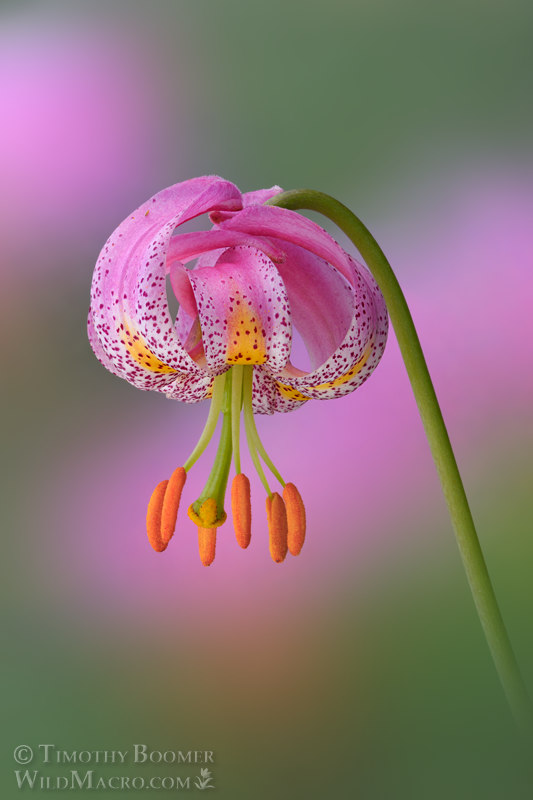
Kellogg's lily (Lilium kelloggii)
With its gorgeous pink and yellow color scheme, bespeckled and recurved petals, and red-orange anthers, Kellogg's lily is easily one of the most beautiful wildflowers in the world. This species had been on my photographic wish list for many years until I finally made the long drive from Vacaville to Humboldt County in the summer of 2023 to capture this image. That's right, I drove 11 hours round-trip and returned with only ONE picture, but it was completely worth it to see this beauty in person. It's a shame that photos can't capture smell because its aroma was absolutely heavenly!
I balanced natural light with diffused fill-flash placed below the flower to brighten the shadows. I also combined 8 frames with different focal points to get the entire flower in sharp focus. This is a technique known as focus-stacking, which you can read more about here.
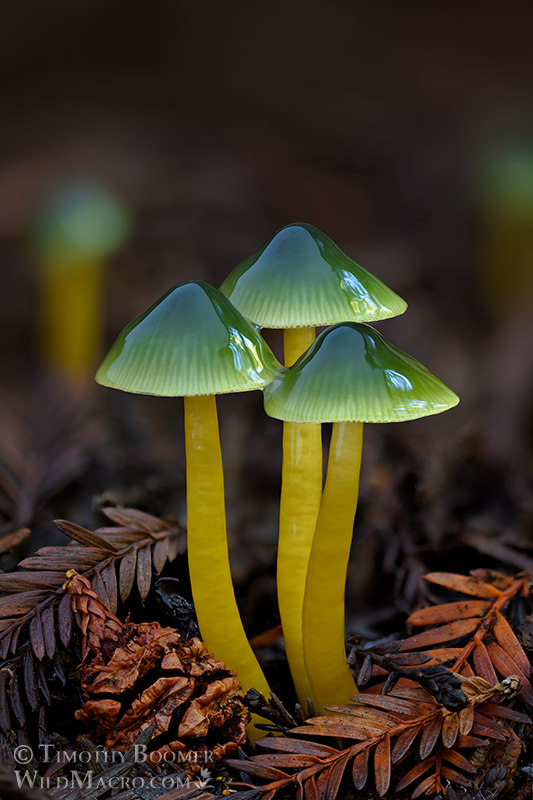
Parrot mushroom (Gliophorus psittacinus)
Here is another beautiful species that had been on my wish list for a number of years. When I finally found it in February of 2020, I was delighted to come across over a dozen fruiting bodies, including the immaculate trio you see above. I thought I might never find such a perfect group of parrot mushrooms again, so I spent well over an hour carefully preparing the scene. I cleared away redwood debris with tweezers and experimented with light and composition to help these emerald beauties look their absolute best. The finished product is a focus-stacked composite of 21 three-second exposures.
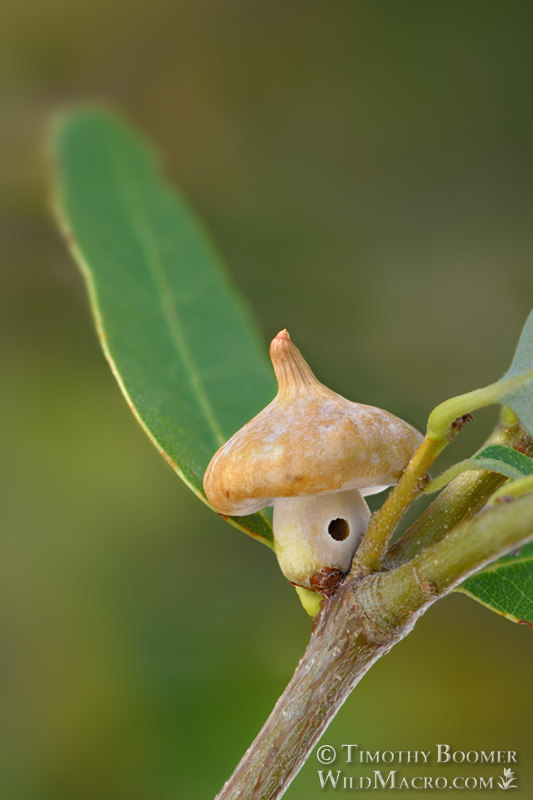
Mushroom gall induced by the cynipid wasp, Heteroecus sanctaeclarae
You need not bother scouring your fungal field guide in search of this peculiar "mushroom." Instead, allow me to introduce you to the fascinating world of plant galls! A gall is a growth that forms in response to some outside stimulus. There are many organisms that induce plant galls, but this particular gall was caused by a tiny insect known as a cynipid wasp or gall wasp. These are not the large, stinging wasps that most people envision; they don't bother humans, and some are only as large as the dot at the bottom of this exclamation point!
When an adult gall wasp lays its egg in a plant, the plant responds by forming special new tissues around the egg. The process is accelerated once the egg hatches and the larva begins chewing, and before long, a gall begins to form from the plant's hijacked nutrients. The gall serves as both protection and nourishment for the developing cynipid within (and of course provides fantastic photographic opportunities for nature nerds such as myself). The larva will mature as it chews its way to the periphery of the gall, and eventually, it will emerge as an adult. The hole near the bottom indicates that this has already occurred.
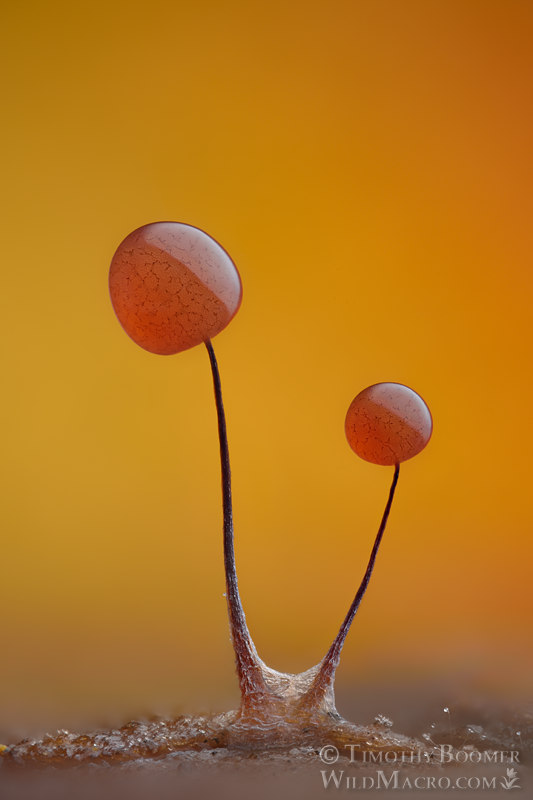
Slime mold (Comatricha nigra)
Slime molds are another group of organisms that can be mistaken for mushrooms. They tend to grow in similar habitats as fungi, and they were even once classified as such. If we look beyond the superficial, however, it turns out that slime molds start out as single-celled organisms, like amoebas, and are more accurately placed in the Protista kingdom. Slime molds are formally known as Myxomycetes, though some enthusiasts (including your truly) lovingly refer to them as "myxos" for short.
Most slime mold fruiting bodies are very small, only about 1.5mm tall. If millimeters aren't your thing, that's about the thickness (not length) of a grain of rice! Filling the frame with such small subjects requires high-magnification optics. In this case, I used a 10x microscope objective specially adapted to my camera. The depth of field is miniscule at this magnification, so I combined 179 exposures to get the whole subject in focus. I'm pleased to announce that my efforts paid off, as this photo was awarded sixth place in the 2023 Nikon Small World photomicrography competition!
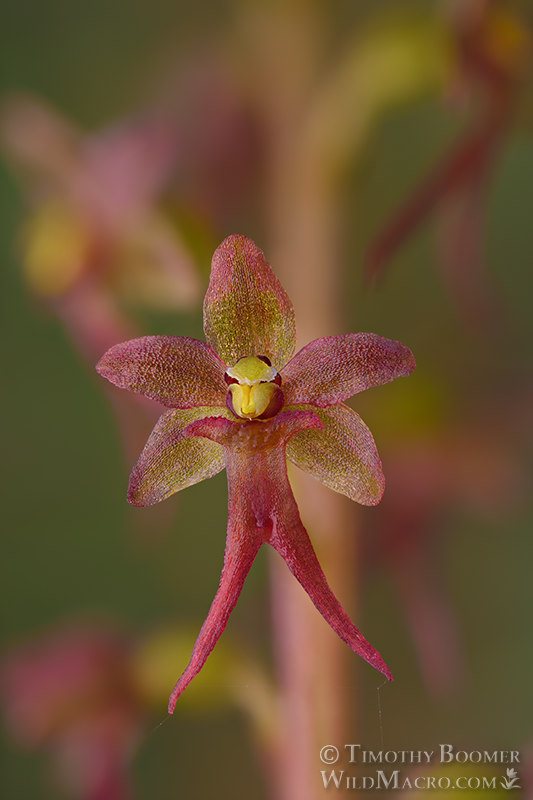
Heartleaf twayblade (Neottia cordata)
This native orchid is named for the shape of its leaves, though it's really the gorgeous little flowers that won my heart over. And they really are little - only half of a centimeter wide. You would need to put your face to the ground with a magnifying glass to get a good look, but I highly recommend this awkward acrobatic feat, as the reward is a glimpse of a sparkly spectacle that is even more beautiful than the finest stained glass.
It was approaching sunset in a densely shaded forest when I began working on this photo, so there wasn't much natural light available. I used diffused flash to illuminate the flower and balanced it with three- and four-second exposures to keep the background bright. It required 50 frames to get the entire flower in focus at 3x magnification.
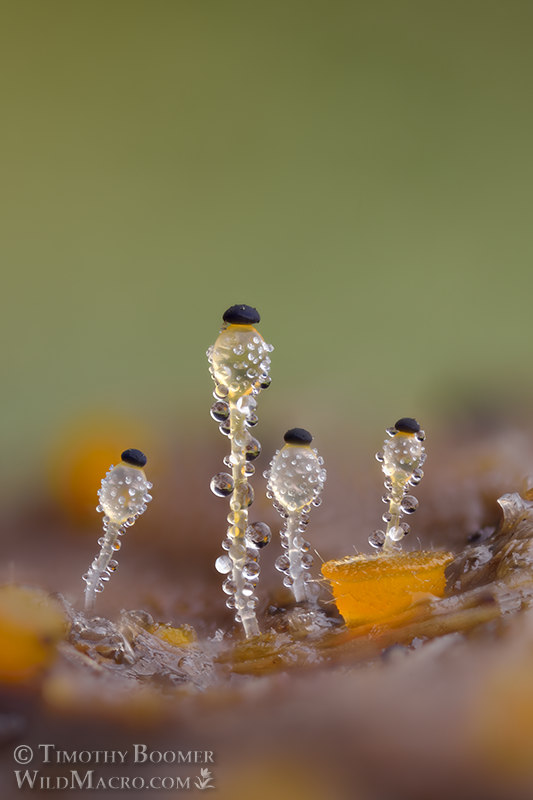
Dung cannon (Pilobolus crystallinus)
I live in Vacaville, which translates to "cow town." And while most folks try to avoid the landmines that our bovine friends leave behind, I occasionally inspect these droppings just in case there is something of interest to be found and photographed. What on Earth could possibly be interesting enough to justify inspecting cow dung? The dung cannon, of course! I'll leave it to the curious reader to learn more about how this fungus works on the species page, but I think everyone can appreciate the beauty of this miniature marvel (so long as the substrate is overlooked).
The dung cannon is often bejeweled with lovely water droplets early in the morning, but they promptly evaporate with changes in temperature and humidity. I had to work quickly to capture this scene before conditions changed. I used an extreme macro lens at 5x magnification and combined 119 exposures to get the tiny fruiting bodies in focus.
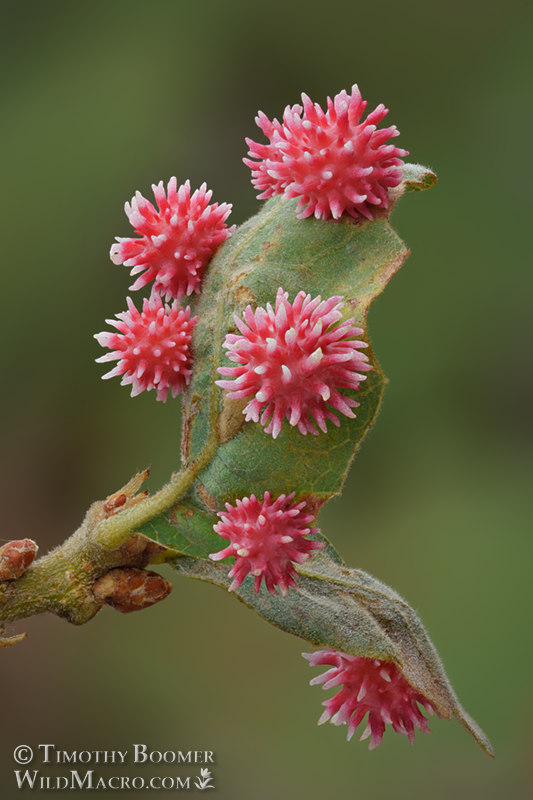
Urchin galls induced by the cynipid wasp, Cynips quercusechinus
These extraordinary "urchins" are not found in the deep blue sea, but rather on the leaves of the majestic blue oak. I am fortunate to have many oaks right in my neighborhood, and I've spent numerous summer days exploring their leaves in search of new and exciting galls. I almost always find something, but the Seussian structures showcased in the photo above are among the most spectacular I've yet discovered. 51 exposures were combined in order to keep the whole cluster sharp.
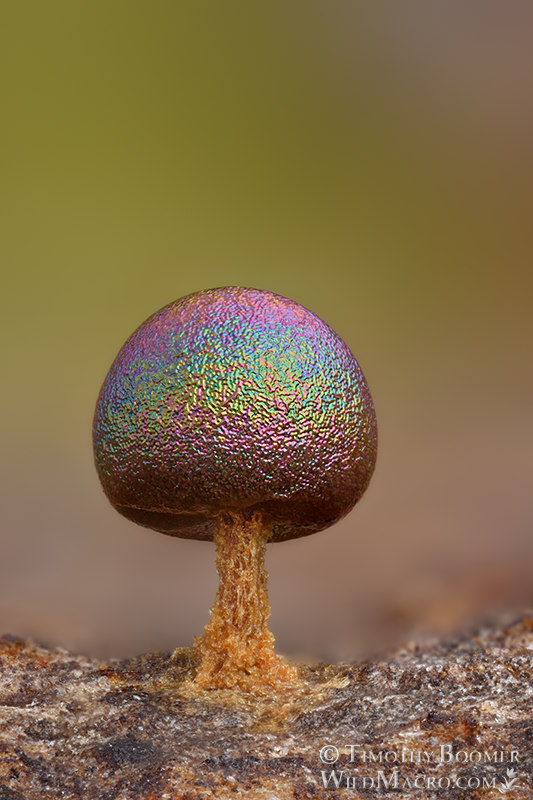
Slime mold (Prototrichia metallica)
Slime molds need moisture to thrive, but I photographed this one in the summer, long after the rainy season. That's because Prototrichia metallica is a nivicolous species - that is, one that occurs near snowmelt. Each summer, I head up to the mountains in search of tiny treasures on damp wood near patches of melting snow. This species usually exhibits some degree of iridescence, but this particular specimen was over-the-top gorgeous!
I photographed it on location using a 10x microscope objective and diffused flash and combined 337 exposures to get sufficient depth of field to cover the scene. No saturation needed!
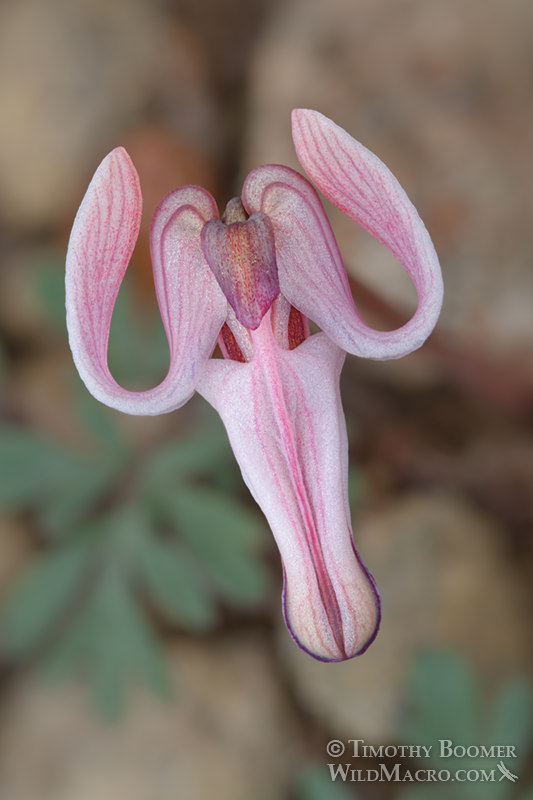
Longhorn steer's head (Dicentra uniflora)
Longhorn steer's head is one of my all-time favorite wildflowers. It really doesn't take much imagination to see this flower as a miniature bovine skull. However, what's not so obvious from this picture is just how small this species is - barely over a centimeter long! (Dare I say holy cow?) I photographed it at twice lifesize and focus-stacked 21 exposures to cover the whole subject. I could have taken a few more exposures, but I wasn't in the moo'd...
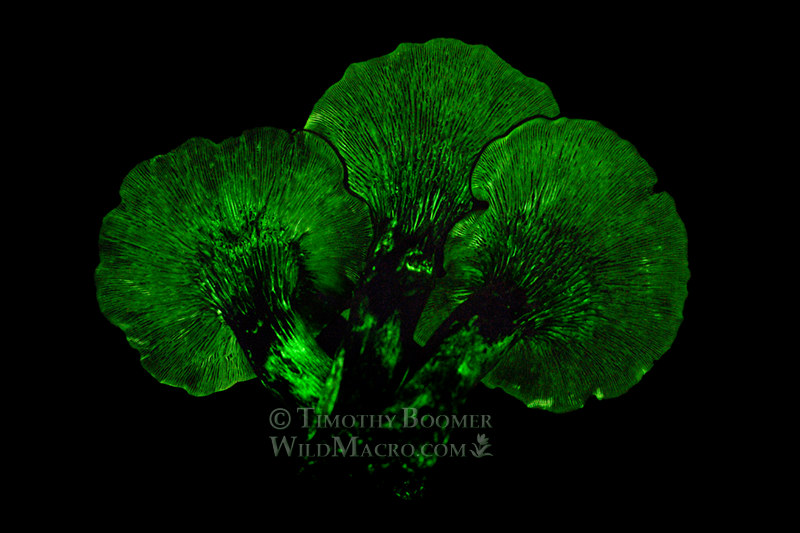
Western jack-o'-lantern (Omphalotus olivascens)
Behold the western jack-o'-lantern - one of California's few species of bioluminescent fungi. That's right, these mushrooms actually glow in the dark! And while some specimens purportedly glow brightly enough to read a newspaper by, I have not found that to be the case thus far. In my experience, the glow is barely noticeable even with completely dark-adapted eyes.
Fortunately, today's cameras can record extremely faint light...given enough time. The photo you see above is actually a focus-stacked composite of four 30-minute exposures at f/2.8 and ISO 3200. That's right, two hours total exposure time (plus another 30 minutes for dark-frame subtraction, but who's counting?). These mushrooms may not have illuminated my newspaper, but they sure did brighten my day.
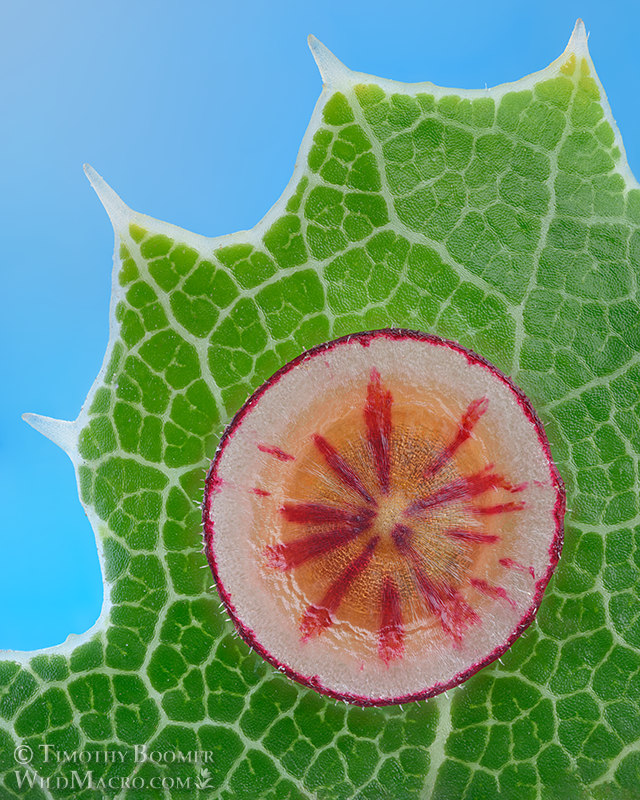
Disc gall induced by Feron parmula
At just 3mm across, this gall is the original compact disc. Tiny and beautiful - now that's music to my ears! This photo is my first ever stacked and stitched micro panorama. It is "stitched" together in Photoshop from six separate parts, each of which is a focus-stacked composite of ~150 exposures taken at 7.5x lifesize. The result is an ultra-high-resolution file with microscopic details that maintains a lower magnification overview composition. Apologies if that all sounds like gibberish; the point is that it required a lot of work, but it was a fun challenge to create, and it will look fantastic printed to enormous sizes.
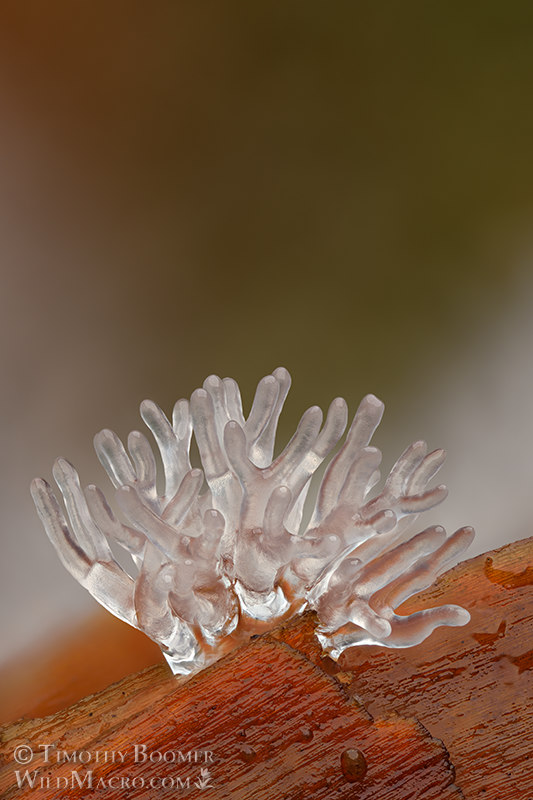
Coral slime mold (Ceratiomyxa fruticulosa)
This bizarre formation may resemble a miniature ice sculpture, but it is actually another myxo commonly known as coral slime. The individual branches are only a couple of millimeters tall, so I got nice and close with a 5x ultra macro lens to showcase the intricate details. The frosty white patches in the background are additional fruiting bodies that are just barely behind the main subject but thrown completely out of focus due to the shallow depth of field at this magnification. It is because of that shallow depth of field that I needed to stack 239 exposures.
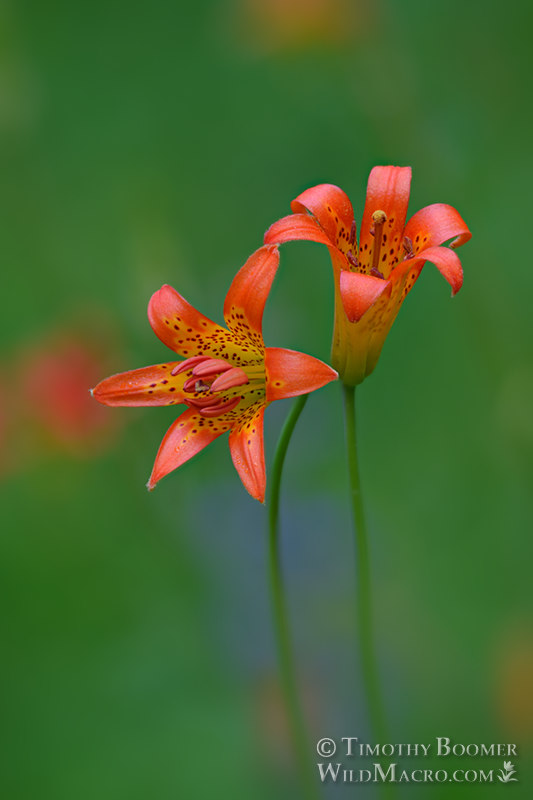
Sierra tiger lily (Lilium parvum)
I'm a sucker for lilies, feline references, and just about anything from the Sierra, so I'm absolutely hopeless when it comes to Sierra tiger lilies. Honestly, they could be half as pretty, and I'd probably still think they were the cat's meow. ;) I photographed this attractive pair under the last light of the day and combined 16 exposures to get them both fully in focus.
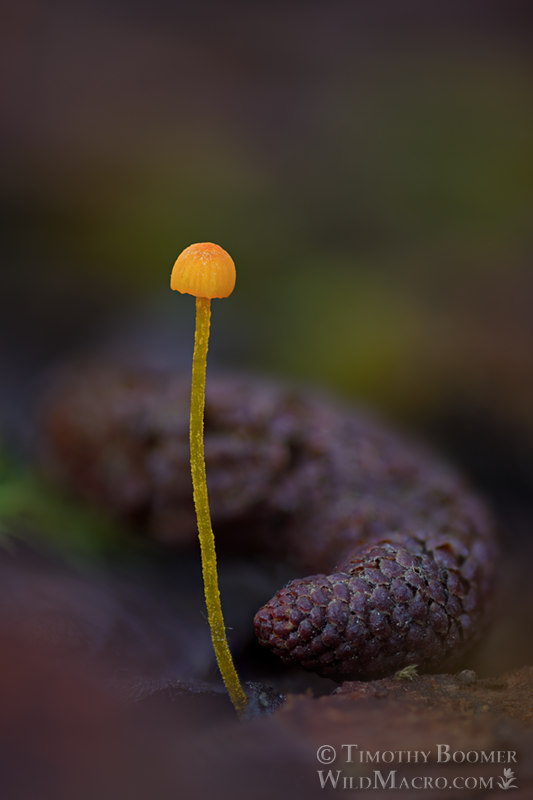
Western yellow mycena (Mycena oregonensis)
This is a far cry from the showiest mushroom, but there's something about this one-inch-tall yellow beacon that just makes me smile. I suspended my camera beneath my tripod and shot from ground level through the forest duff to create a soft, ethereal look.
![]()
Interested in buying a print or licensing a picture? Click on the purchasing link for more information or contact us with any questions you may have. Thanks for looking!
Back To Top
All images copyright Timothy Boomer. All rights reserved worldwide.